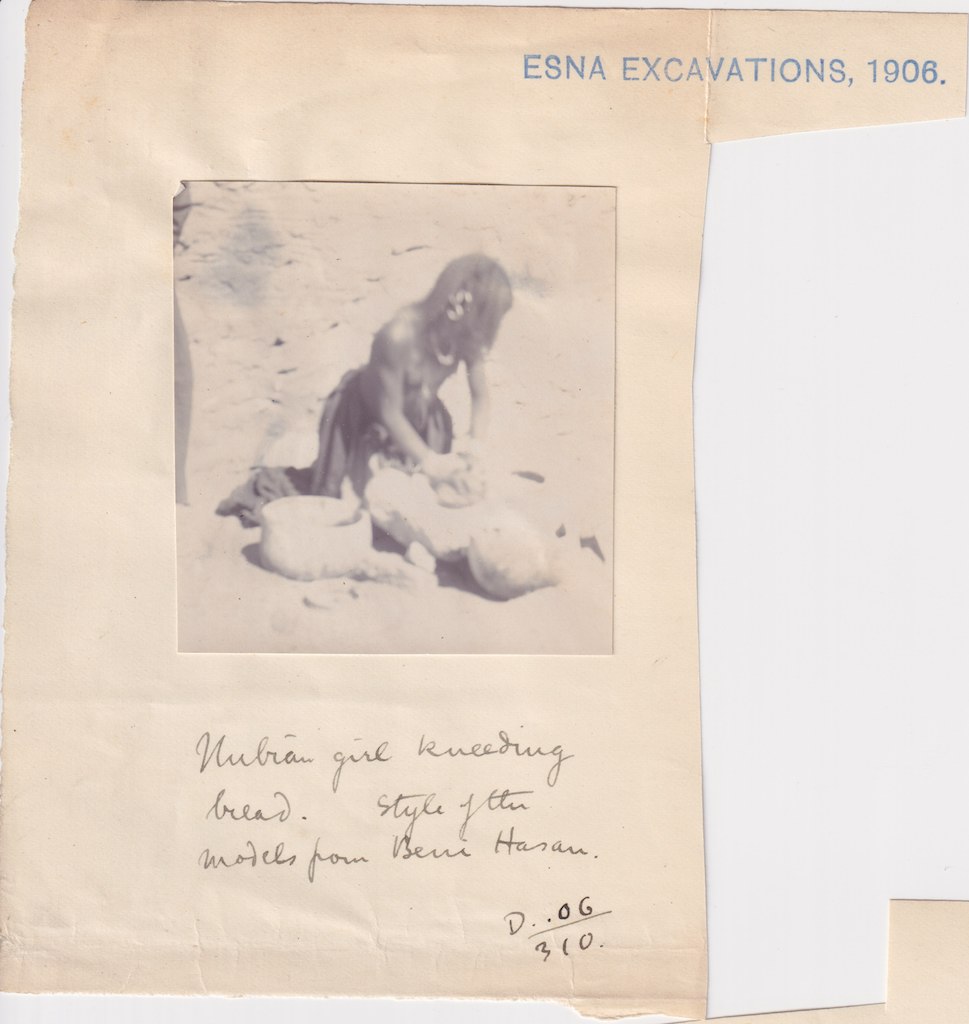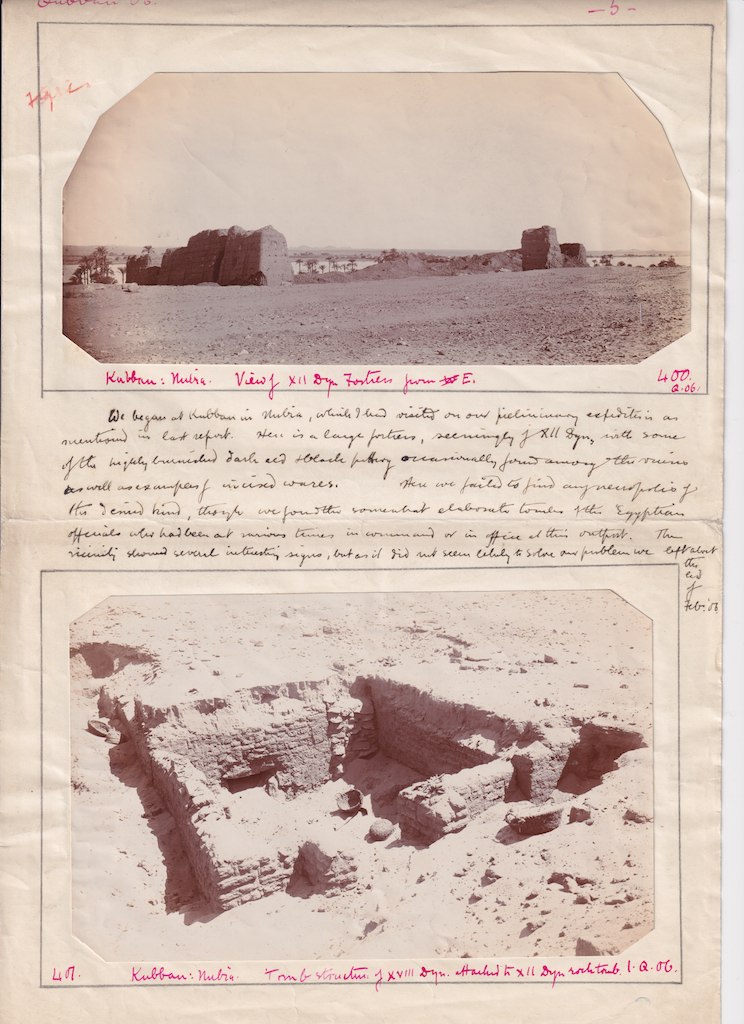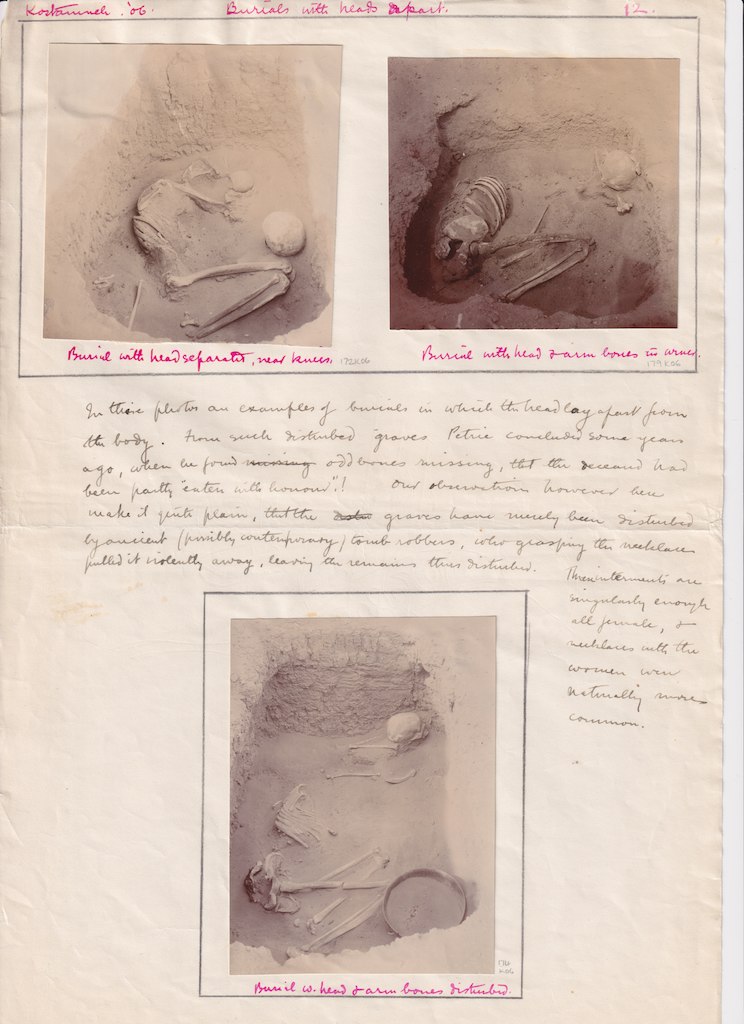The drawers underneath each section of the display case contain additional material relevant to each section of the “Egypt in Reading” exhibition. Click on the section title to go to the handlist for the individual display case section.
- Photographs of a girl, taken during excavations at Esna, 1906 [reproduced courtesy of the Garstang Museum]


These two photographs taken of an unnamed girl, who probably lived close to Esna, were included in one of Garstang’s field reports from site. Here, she is being used as a living (modern) model for ancient Egyptian baking and ancient Egyptian hairstyles.
There is no record of how she felt about these photographs being taken, or whether she knew how these photographs of her were used and interpreted.
- Page from one of Garstang’s interim reports, showing the 1906 excavations at Qubban, in Nubia [reproduced courtesy of the Garstang Museum].

John Garstang and his Egyptian team began their work in Nubia at Qubban. This page from Garstang’s report shows two photographs: (top) the fort at Qubban, which dated to the 12th Dynasty; (bottom) a structure attached to one of the site’s rock tombs, also dating to the 12th Dynasty.
Qubban and its near neighbour Koshtamna are both now submerged in Lake Nasser.
-
- In this audio, listen to Dina Rezk discussing the economic, political and cultural impact of the Aswan Dam.
- Map of Egypt and Sudan, c. 1913
This map originally appeared in a guidebook to Egypt and Sudan published by a company called “African World”. “African World” promoted colonial projects and investment opportunities across Britain’s colonies in Africa. Archaeological sites in Egypt and Sudan were featured in “African World” publications as an important part of tourism infrastructure, alongside railways and “big game” hunting.
The sites represented in the exhibition are marked on the map.
- Beni Hassan card found in tomb [reproduced courtesy of Chloé Ragazzoli]
This card was unearthed by archaeologists on site at Beni Hassan a few years ago. It is valuable evidence of the ways in which both John Garstang and Salah Abd El Nebi managed visitors to the excavations. The card reads:
EXCAVATIONS AT BENI-HASAN
Visitors to the Rock-Tombs are earnestly [illegible] to restrain their dragomans and guides from attempting to converse with the workmen employed in excavation.
Workmen, guards and others found in unnecessary conversation or receiving gratuities will be instantly dismissed.
The foreman who hands you this card will convey any written message: but you are respectfully asked not to address him in English.
- Page from Koshtamna excavation field report, 1906 [reproduced courtesy of the Garstang Museum]

This page shows three different bodies (interpreted here as female) discovered in situ at Koshtamna: tombs 172 (top left), 179 (top right) and 174 (bottom centre). The skulls were found separated from the rest of the skeletons.
In the handwritten text accompanying the photographs, Garstang notes that Flinders Petrie’s theories of cannibalism (being “eaten with honour”) were not supported by their findings. Instead, he wrote,
“Our observations … make it quite plain that the graves have merely been disturbed by ancient (possibly contemporary) tomb robbers, who grasping the necklace pulled it violently away, leaving the remains thus disturbed.”
Text by Amara Thornton (Research Officer, Ure Museum)
Back to the previous section, Britain in Egypt.
Move on to the next section, Egypt in Britain.


